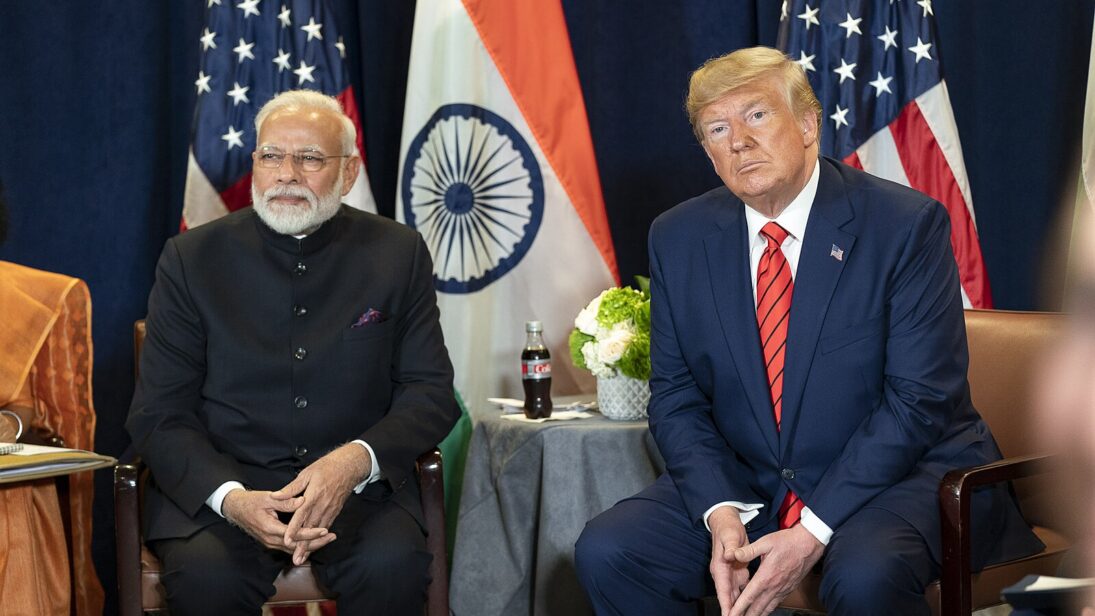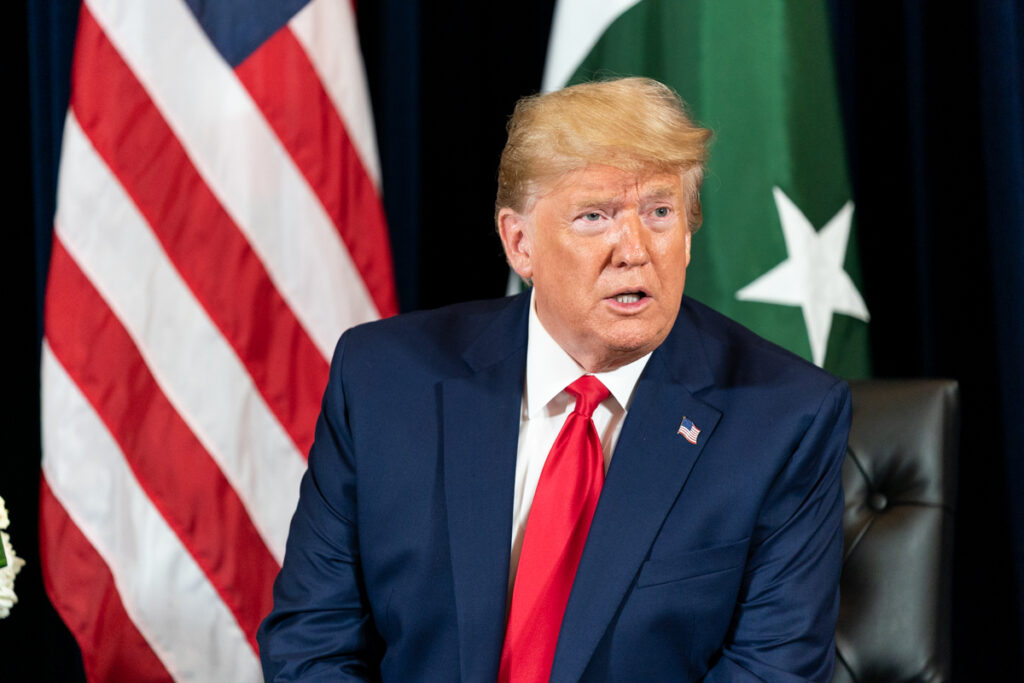
by Satvik Pendyala
Earlier this month, delegations from India and Pakistan arrived in the United States to conduct diplomatic outreach and shore up American support for their positions over Kashmir and terrorism in the aftermath of the Indo-Pak clash in May. Led by opposition leader Shashi Tharoor, the Indian delegation aimed to marginalize Pakistan by reaffirming the U.S.-India strategic partnership, following up on bilateral initiatives, and assuaging American concerns over an escalation in tensions. On its part, Pakistan’s delegation, led by Bilawal Bhutto Zardari, emphasized the need to bring in third parties to mediate between the two countries and pressure India to restore the Indus Waters Treaty (IWT). These delegations and subsequent diplomatic developments involving Washington, New Delhi, and Islamabad underscore the uncertainty stemming from the second Trump administration’s inconsistent approach to the region.
While the Indian delegation was successful in scoring statements of support and reaffirming institutional U.S.-India cooperation, President Donald Trump undermined efforts to bridge a trust deficit between the two countries over the Kashmir dispute. Trump’s continued claims of having negotiated a ceasefire between India and Pakistan, and his offers of mediating the Kashmir dispute, have left New Delhi struggling to adapt. On the other hand, the Pakistani delegation was followed by Field Marshal General Asim Munir’s trip to Washington, where he met directly with Trump, underscored Pakistan’s recent attempts to do personal outreach to members of the administration and pursue tactical cooperation with the United States. Despite these opportunities, however, Pakistan was unable to counteract the institutional challenges that dog its relationship with Washington.
Trump’s continued claims of having negotiated a ceasefire between India and Pakistan, and his offers of mediating the Kashmir dispute, have left New Delhi struggling to adapt.
Navigating the U.S.-India Divide on Kashmir
In the weeks following the terrorist attack on tourists in Indian-administered Kashmir by a suspected Pakistan-backed terror group, India-Pakistan tensions reached a fever pitch as New Delhi put the IWT in abeyance and launched a counterterrorism offensive called Operation Sindoor. This four-day conflict included Indian precision strikes on a dozen Pakistani airbases, major aerial clashes between the countries using drones and a suspected mutual loss of aircraft, eventually ending with a ceasefire.
Although the military conflict is on pause, the diplomatic offensives have just begun. In an effort to build global support for their respective narratives, New Delhi and Islamabad organized teams of parliamentarians to visit various capitals around the world. India sent as many as seven multiparty delegations to engage current and future members of the UN Security Council (UNSC) while Pakistan dispatched a single delegation to court the United States, the United Kingdom, and Europe.
Perhaps the most consequential of these overtures was the one to the United States with whom New Delhi has suffered a slight rift in recent months. In the aftermath of the India-Pakistan clashes, Trump claimed that he had played a key role in mediating between the two parties and helped reach a ceasefire—a claim strongly rejected by New Delhi. This added to preexisting tensions between New Delhi and Washington, including due to Trump’s imposition of tariffs and their protracted trade negotiations, heightened by his claims of using trade to force a ceasefire between India and Pakistan.
These U.S. efforts and statements run counter to New Delhi’s long held stance that the Kashmir conflict is a bilateral issue between India and Pakistan, but it played to Pakistan’s traditional policy of seeking third-party mediation. New Delhi has objected to any intervention on the dispute by global powers since its negative experience with initially bringing the Kashmir dispute to the United Nations in 1948 and its stance of bilateral negotiation has been codified in the 1972 Shimla Agreement between the two countries. However, Pakistan has frequently sought to internationalize the Kashmir dispute in order to persuade global powers such as the United States to intervene on its behalf. During this month’s visit, for instance, the Pakistani delegation hoped that the United States will broker a deal with India and prevail upon New Delhi to reinstate the IWT. Field Marshal Munir’s visit to the United States also seems to have indicated a similar agenda.
Dueling Approaches
In the run-up to the second Trump administration, U.S.-India ties were on an undeniably positive trajectory. Incoming cabinet members had strong records of support for India and both countries had formalized cooperation at the National Security Advisor level through iCET, which then continued on as TRUST. However, these institutional channels of cooperation do not appear to have given New Delhi the ability to navigate Trump’s unpredictable public statements and policy actions.
Thus, in an effort to avoid any public disagreements with Trump and still achieve New Delhi’s strategic interests, the visiting Indian delegation chose to keep the agenda of its meetings more broad-based and in line with mutual priorities. In meetings with the Congressional India Caucus, the House Foreign Affairs Committee, and the Senate Foreign Relations Committee, the Indian delegation touched on strategic cooperation in trade and technology in addition to Operation Sindoor. Deputy Secretary of State Christopher Landau released a statement after his meeting with the Indian delegation that emphasized trade cooperation as much as it did counterterrorism. This was echoed in the delegation’s meeting with Vice President JD Vance as well.

While the Indians initially arrived in the United States to attempt damage control and reaffirm the U.S.-India relationship, the Pakistani delegation came to Washington facing a credibility crisis in the aftermath of the Taliban’s takeover of Afghanistan. However, in the rift that opened up between New Delhi and Washington due to the mediation issue, an opportunity for tactical gains emerged. In its meetings with the Congressional Pakistan Caucus, the House Foreign Affairs Committee, and individual senators, the Pakistani delegation focused almost entirely on bringing U.S. attention to the conflict and on pressuring India to restore the IWT.
Notably, in much of its diplomatic outreach to the United States, Pakistan focused greatly on appealing to President Trump and his personal policy interests. The Pakistani delegation repeatedly affirmed Trump’s mediation claim across several of its meetings, while other Pakistan government officials used crypto-policy to personally appeal to him. Though the Pakistani delegation had limited ability to change the views of the strategic community in Washington, the subsequent Munir-Trump meeting was a major symbolic achievement. The meeting, an honor usually given to a foreign Head of State or Head of Government and not an army chief, followed the news that Pakistan had officially nominated Trump for the 2026 Nobel Prize to recognize his “role as a peacemaker.” Munir and Trump discussed the India-Pakistan conflict, crypto, critical minerals, and the concurrently developing Israel-Iran conflict.
Challenges for India and Pakistan
Even with the unease caused by Trump’s mediation claims, India received statements of support from the House Foreign Affairs Committee and the State Department. The delegation was also successful in terms of underscoring New Delhi’s strategic importance to the United States in the face of major geopolitical challenges emanating from China and the Middle East.
However, the delegation’s objective of restoring bilateral trust was continuously marred by the White House. While the delegations were in town, Trump continued to state that he played an instrumental role in stopping the conflict and that Pakistan enjoyed “very strong leadership.” The Trump administration also used this forward position on India-Pakistan mediation to justify its executive authority over domestic tariffs. These positions made it difficult for Republicans in Washington to publicly endorse India’s narrative around the ceasefire, thereby leaving room open for Pakistan to call on the United States to pressure India to negotiate.
The Trump-Munir meeting also drew a dark cloud over the U.S.-India relationship, as Modi notably rejected an invitation to visit DC on his way back from the G-7 summit in Canada at the same time that Munir was in town. Trump’s supposed attempt to get both leaders in Washington simultaneously signals to New Delhi that his wish to be seen as a peacemaker remains a top priority. Such a move is perceived by the Indian strategic community as Washington providing Islamabad with the leverage to put pressure on New Delhi and is highly corrosive to the Indian stance against third-party mediation. As a result, Indian Foreign Secretary Vikram Misri released an uncharacteristically stern statement that India does not and will never accept a third party mediation.
The unpredictability of the White House seems to have colored the successes that the Indian delegation achieved, which tried to focus more on institutional outreach. Despite Modi’s personal rapport with Trump, India faces constraints on personal outreach to him that Pakistan does not. As a democratic country, beholden to a domestic audience that responds negatively to slights to its prestige, India will struggle to undertake personalized efforts to please individuals in Trump’s inner circle, especially as they could undermine the bipartisan support that New Delhi enjoys in Washington. Though to hedge against any chaos in its ties with Washington, New Delhi is likely to take actions such as increasing outreach to China to repair their strained relationship.
However, leader-level trust erosion can undermine U.S.-India cooperation in the future. For instance, Trump’s claims to use trade to force a ceasefire may impact New Delhi’s view of Washington as a reliable supplier of defense goods. Additionally, Trump’s penchant for “peacemaking” and his welcome treatment of Munir after the May 2025 clash could factor into India’s willingness to share information about its operational intent in future India-Pakistan crises.
Islamabad suffers serious institutional and structural weaknesses in its relationship with Washington that leader-level outreach cannot solve.
On the other hand, Pakistan may be more comfortable with an increasingly personalist administration that views institutions and established credibility as secondary. However, this approach means that as soon as Trump’s attention wavers from Kashmir, any pressure from the United States on India — whether to begin talks on Kashmir or to push for the restoration of the IWT — will waver as well. Pakistan’s direct courting of President Trump has already undermined itself, with Islamabad already officially condemning Trump’s strikes on Iranian nuclear facilities the day after nominating him for a Nobel Peace Prize.
Overall, Islamabad suffers serious institutional and structural weaknesses in its relationship with Washington that leader-level outreach cannot solve. Despite Trump’s promise of a trade deal, for instance, the U.S.-Pakistan economic relationship is dwarfed by the U.S.-India relationship. China’s increased military and economic presence in Pakistan has also been noted with concern by U.S. intelligence agencies. With Beijing remaining the primary threat to Washington, New Delhi’s deeper institutional ties and strategic importance to U.S. interests in countering China position it more favorably for a long-term partnership. While New Delhi enjoys a multifaceted relationship with Washington, the U.S.-Pakistan institutional relationship risks restricting itself to cooperation on counterterrorism. In that sense, even though the two visiting delegations may have ended up with a mixed record of success, India and Pakistan are not on an equal footing in Washington.
The article appeared in the southasianvoices